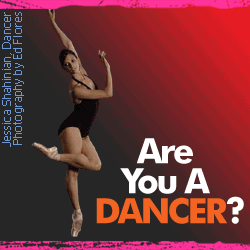Dance Review: Armitage Gone! Dance presents Itutu at BAM Collaboration or Appropriation? (Check Yes or No)
November 16, 2009 by iDANZ Today
Filed under Concert Modern -Jazz-Contemporary, iDANZ Critix Corner -Dance Reviews, Reviews
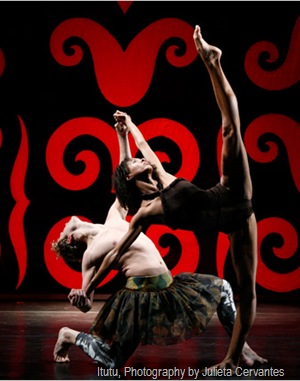 When people of Irish decent get angry over the use of the ‘mythical’ leprechaun by the Boston Celtics and Notre Dame’s Fighting Irish, do people of African decent have the right to get angry over the use of Africa’s cultural music, spiritual symbols, costume and a very few steps in an African ballet choreographed by a white American woman from Kansas? ¨ Maybe.
When people of Irish decent get angry over the use of the ‘mythical’ leprechaun by the Boston Celtics and Notre Dame’s Fighting Irish, do people of African decent have the right to get angry over the use of Africa’s cultural music, spiritual symbols, costume and a very few steps in an African ballet choreographed by a white American woman from Kansas? ¨ Maybe.
Now, I am as "harmony in the rainbow" as they come…"blue-eyed soul" as they go…having green eyes myself (and a good portion of Scotch-Irish boiling blood mixed with renegade Cherokee and runaway slaves). Excited, I arrive at BAM for Karole Armitage’s African Ballet Itutu’s premier knowing little of her four-year-old company. Her style is the culmination of a 30-year international dancing career that spans "punk" ballet and Cunningham with a good amount of Post-modernist experimentation thrown in along the way.
The evening-length work of five parts is described as “the combination of sacred and secular images, diverse rhythms, and the use of multiple languages.” In addition, “Armitage’s classical abstractions and traditional African dance translate the polyrhythmic music into a poly-visual form” [BAM news release]… OK.
Itutu opens with Burkina Electric softer Afro-pop sounds center stage against Philip Taaffe backdrops of abstraction of West African symbols of wisdom and spirituality. These many backdrops are backlit and front lit with vibrant colors and flown in and out creating a multi-dimentional environment behind the dance. Armitage establishes a mood as the classically trained dancers move in and around the band members who also sing, dance and act in a more traditionally African style throughout. The opening of the ballet is a very sexy concept with great execution. I am mildly optimistic about this collaboration.
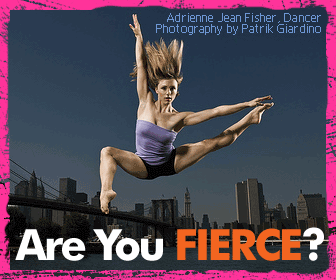 Maï Lingani (vocals/dancer) is the linchpin of most of the work as she can create moods with voice, body and emotion. She is aided by her talented counterparts from Burkina Electric with Wende K. Blass (bass guitar) and Vicky and Zoko Zoko (vocals/dancers). The score by Lukas Ligeti (son of György Ligeti) is nuanced with an understanding and appreciation for African rhythm and harmony. Although he doesn’t appear onstage in the work, his introduces various African instruments for Bukinababé rhythms with an Afro-pop sound.
Maï Lingani (vocals/dancer) is the linchpin of most of the work as she can create moods with voice, body and emotion. She is aided by her talented counterparts from Burkina Electric with Wende K. Blass (bass guitar) and Vicky and Zoko Zoko (vocals/dancers). The score by Lukas Ligeti (son of György Ligeti) is nuanced with an understanding and appreciation for African rhythm and harmony. Although he doesn’t appear onstage in the work, his introduces various African instruments for Bukinababé rhythms with an Afro-pop sound.
In the five scenes, Amitage vacillates between creating a mood and executing a movement idea. Mostly, the sections begin abruptly with little transition or over arching structure to the work. Scene after scene play with some variation, but without enough development to keep it interesting. Dragging frequently after the opening scene, I find myself focusing on the great performances like a beautifully executed pas de deux between Megumi Eda and Zoko Zoko. There, initial meeting brings Eda’s head into Zoko Zoko’s hand. Her eyes open and a power struggle ensues. The concept of seeing the male African form on the female Asian form is nothing new. The duet is more subtle than suggestive. In their variation of this duet, Zoko finds himself compelled by Eda’s subtlety, only to repeat the phrase and place his head on her hand.
 The work continues scene after scene with little connectivity or real movement invention with the exception of a few beautifully executed duets with somewhat dated partnering and no real fusion between the African and the ballet. Then there were the pseudo vogue, ballet jazz walk scenes across the floor? What the*#&$*! In another random moment, Zoko Zoko appears upstage suspended in a box high above them all and behind the backdrop for a visually stunning dead end. Enough said.
The work continues scene after scene with little connectivity or real movement invention with the exception of a few beautifully executed duets with somewhat dated partnering and no real fusion between the African and the ballet. Then there were the pseudo vogue, ballet jazz walk scenes across the floor? What the*#&$*! In another random moment, Zoko Zoko appears upstage suspended in a box high above them all and behind the backdrop for a visually stunning dead end. Enough said.
Fortunately for the audience, all of the dancers have beautiful lines and a strong sense of contemporary ballet and throw themselves into the repetitive and rudimentary African steps. The company, as a whole, performs sharply and with enthusiasm. Armitage creates strong male roles for Leonides D. Arpon and Luke Manley. However, I feel that Marlon Taylor-Wiles is underused in this fusion work where he could have clearly done more as a bridge between the two styles.
 As a moving dreamscape, the work is visually stunning like a psychedelic trip through AfroBallet-Pop Dancelandia. But, if you are sober, as I am, it is very very slow for African or ballet dance, self indulgent in structure and propped up as a work by the collaborators around Armitage. What I yearn for with every sinew in my multi-ethnic soul is to see stronger choreography from any ethnicity. If you can take it and make it better, as the Japanese dance crews did for group precision and ingenuity in Hip Hop, then more power to you. If not, leave it alone.
As a moving dreamscape, the work is visually stunning like a psychedelic trip through AfroBallet-Pop Dancelandia. But, if you are sober, as I am, it is very very slow for African or ballet dance, self indulgent in structure and propped up as a work by the collaborators around Armitage. What I yearn for with every sinew in my multi-ethnic soul is to see stronger choreography from any ethnicity. If you can take it and make it better, as the Japanese dance crews did for group precision and ingenuity in Hip Hop, then more power to you. If not, leave it alone.
The collaborative elements in the production are of value for the multi-ethnic cast who have the opportunity to present their artistry. Itutu showcases one the most talented and beautifully diverse collections of classically trained dancers on BAM’s stage in 2009 (Brava Armitage!), gorgeous iridescent images of Phillip Taaffe as a chimerical backdrop inspired by adinkra symbols of Ghana (Brava Armitage!), culturally appropriate costumes of Peter Speliopoulos for African dance and classical lines, and the energetic/eclectic/electric pop sounds and dancing of Lukas Ligeti’s score with a live song/dance blended performance of Burkina Electric (Brava Armitage!). If Karole Armitage were a dance impresario like Diaghilev, “Brava!” is all I could say.
 Yet, as a female choreographer she needs more personal risk and less borrowed mood. It is not that every work has to have some explosive and "ejaculatory climax" of a classic/patriarchal structure (exposition, rising action, climax, falling action, dénouement). Female choreographers often subvert this structure in favor of our own series of increasing peaks of excitement throughout. Yet, when Armitage advertises an "African Ballet," I am expecting something exciting to happen before the curtain falls.
Yet, as a female choreographer she needs more personal risk and less borrowed mood. It is not that every work has to have some explosive and "ejaculatory climax" of a classic/patriarchal structure (exposition, rising action, climax, falling action, dénouement). Female choreographers often subvert this structure in favor of our own series of increasing peaks of excitement throughout. Yet, when Armitage advertises an "African Ballet," I am expecting something exciting to happen before the curtain falls.
Choreographically for me, this work is one long, drawn-out tease. This is not ballet class where the only time I feel like I am dancing is in the grande allegro. If the biggest dynamic change in movement happens during the finalé (a coming together at the end of an African ballet) then what do you call the preceding 60 minutes of the ballet? Warm up? Across the floor?
This is 2009, if you want to appropriate the whole of African dance culture in a visually stunning way, you must at least make it authentically your own for your company or it becomes just another attempt to spice up blasé Western choreography with anything from African culture that is not nailed down. I am really looking for Armitage to challenge the dancers to improvise if the music is not consistent and not just overlay it with slow ballet steps on faster African music. In African dance/music, the music culturally dictates the length and time of the dance and some times the movement itself.
Where is the sense of the "Godhead" or the sacred as advertised?
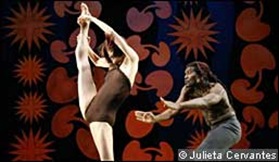 Where is the fast paced petite allegro from ballet? Could we have seen those amazing dancers beat their feet to that syncopated West African sound? What would that have looked like?
Where is the fast paced petite allegro from ballet? Could we have seen those amazing dancers beat their feet to that syncopated West African sound? What would that have looked like?
Armitage should have asked for choreographic dance collaboration and then credited her dancers. I am sure that her talented group could have brought the dynamic cultural and physical change that was missing.
Why can’t more classical movement transfer to African trained dancer/musicians from ballet and vice versa? Could better or even contemporary African dance steps challenge Armitage’s company, a company comprised with very diverse dancers? If it is billed as "contemporary," I would hope to see boundaries pushed in both ballet and African dance and perhaps even a true melding of the two creating a new form, which has not existed before Itutu. And, if it is classical, what exactly is the storyline?
To see something new and different in the arts creates a watershed moment that last a lifetime for the audience. To see the same cultural three-card monte game played at a higher level is merely an entertaining ruse.
I always have one dream. I dream it every night. It is combining the beautiful lines of the classically trained dancer with a form closer to my choreographic heart of contemporary African dance and the financial production capacity to do it right. Beautifully financed and produced as Itutu is, when a choreographer steps into the territory of the "colonizer" in 2009, they’d better be pushing more than prettier baubles.
I waited a week to write this review hoping I would calm down, but the lukewarm attempt to combine the classical and the Afrocentric in choreography still boils this lass’s blood. Appropriation….
 iDANZ Critix Corner
iDANZ Critix Corner
Official Dance Review by Sasha Deveaux
Performance: Armatige Gone! Dance, Itutu
Choreographer: Karole Armitage
Music Collaboration: Lukas Ligeti with Burkina Electric of Bikina Faso
Set: Phillip Taaffe
Costume: Peter Speliopoulos
Venue: BAM, Brooklyn, NY
Show Date: November 4, 2009 @ 7:30pm
www.iDANZ.com
Have You Seen the iDANZ Social Network? 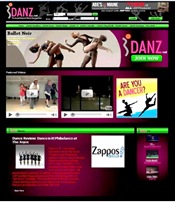
Click Here To Become a Member of iDANZ.com Today!
The More Members We Have, The More We Can Make a Difference.
It’s Free!
iDANZ – The Social Network Where Dancers Live!
Want to stay connected to iDANZ? Join our network
using the following services:

